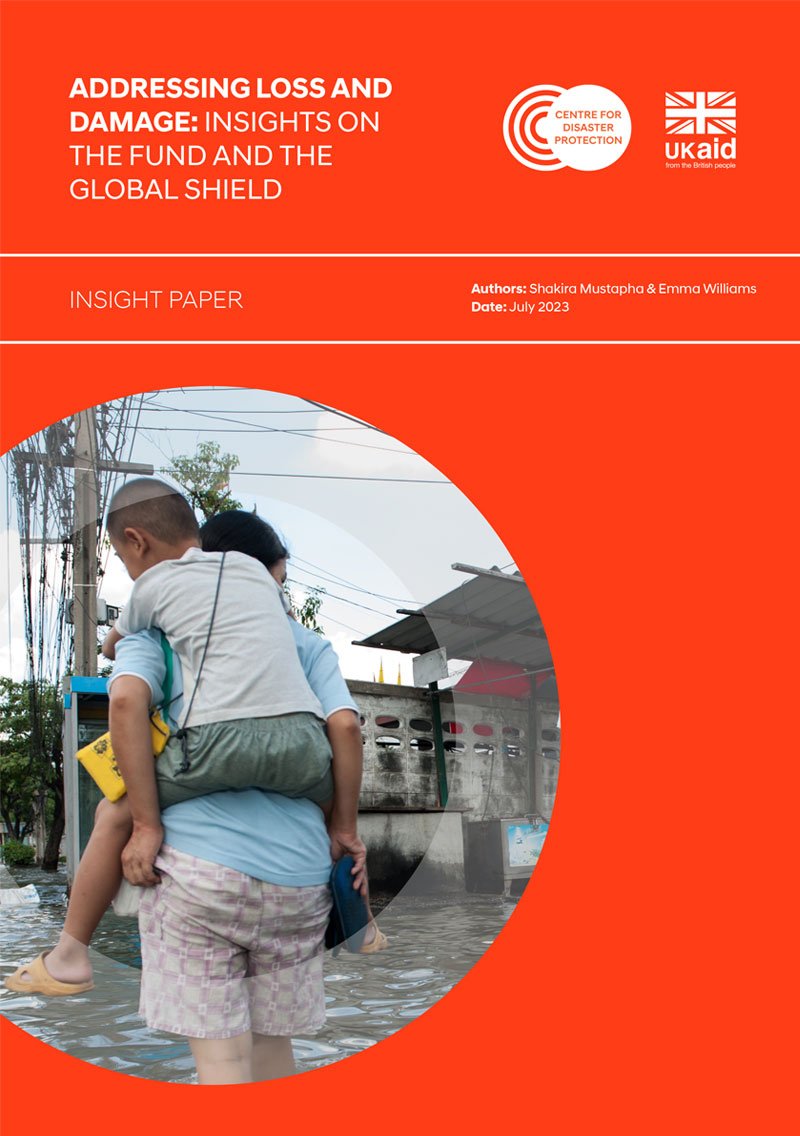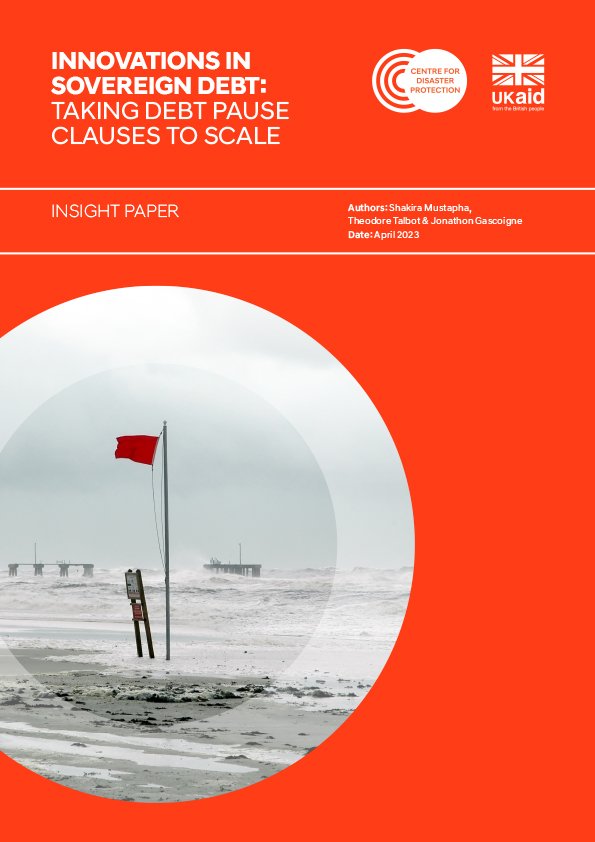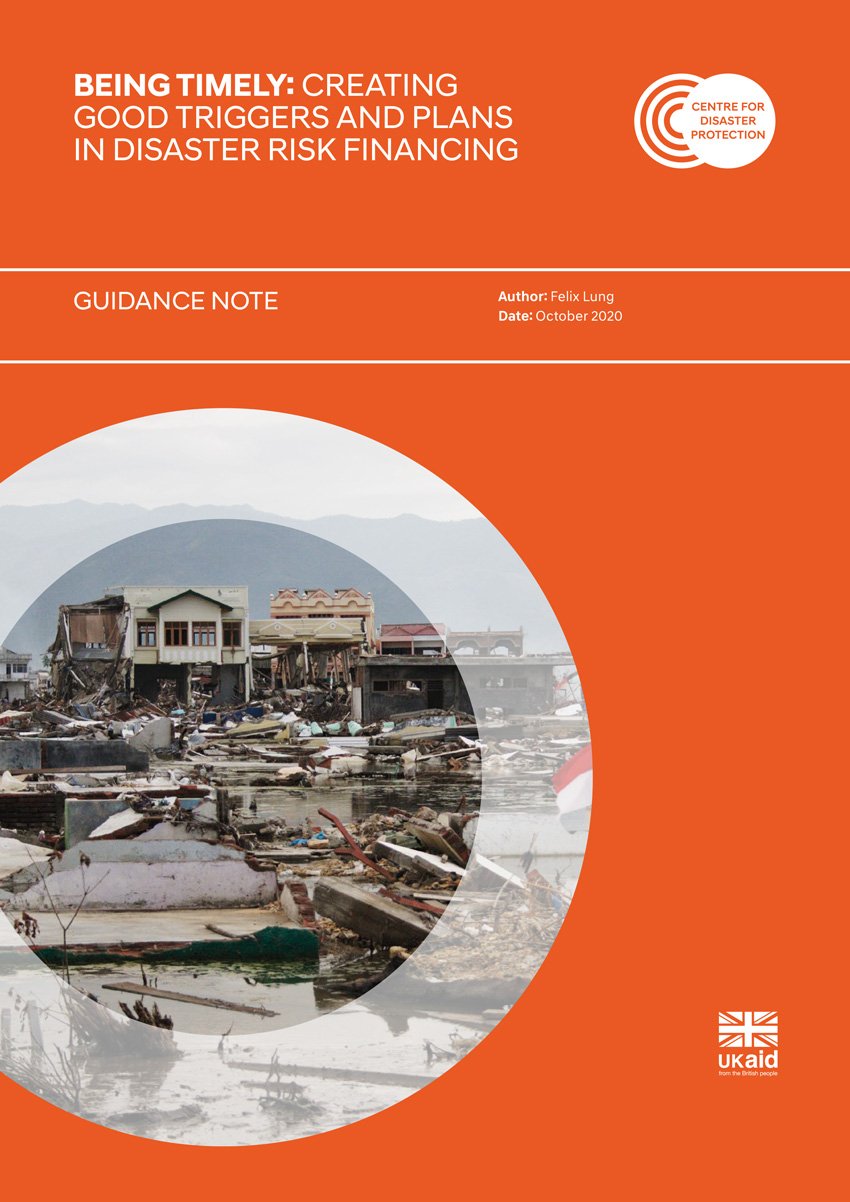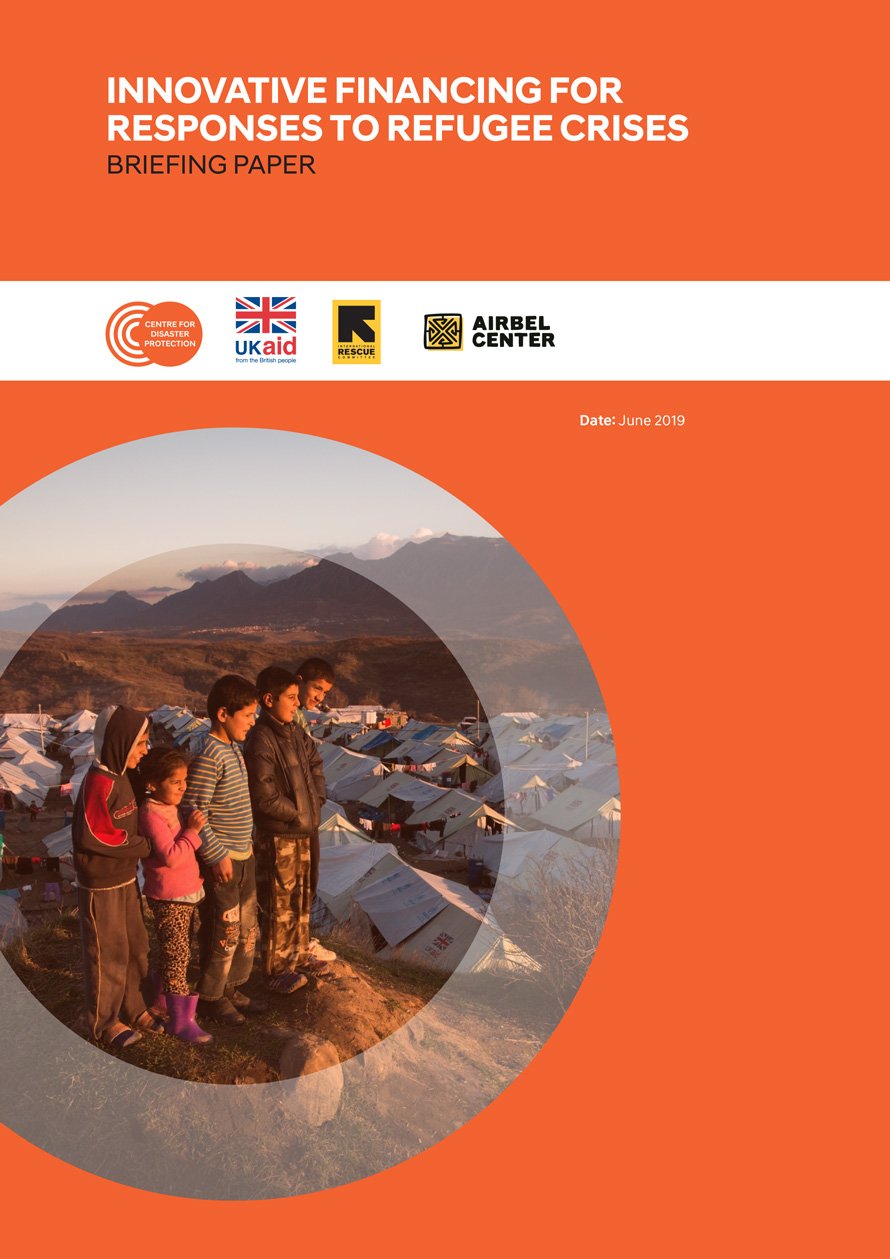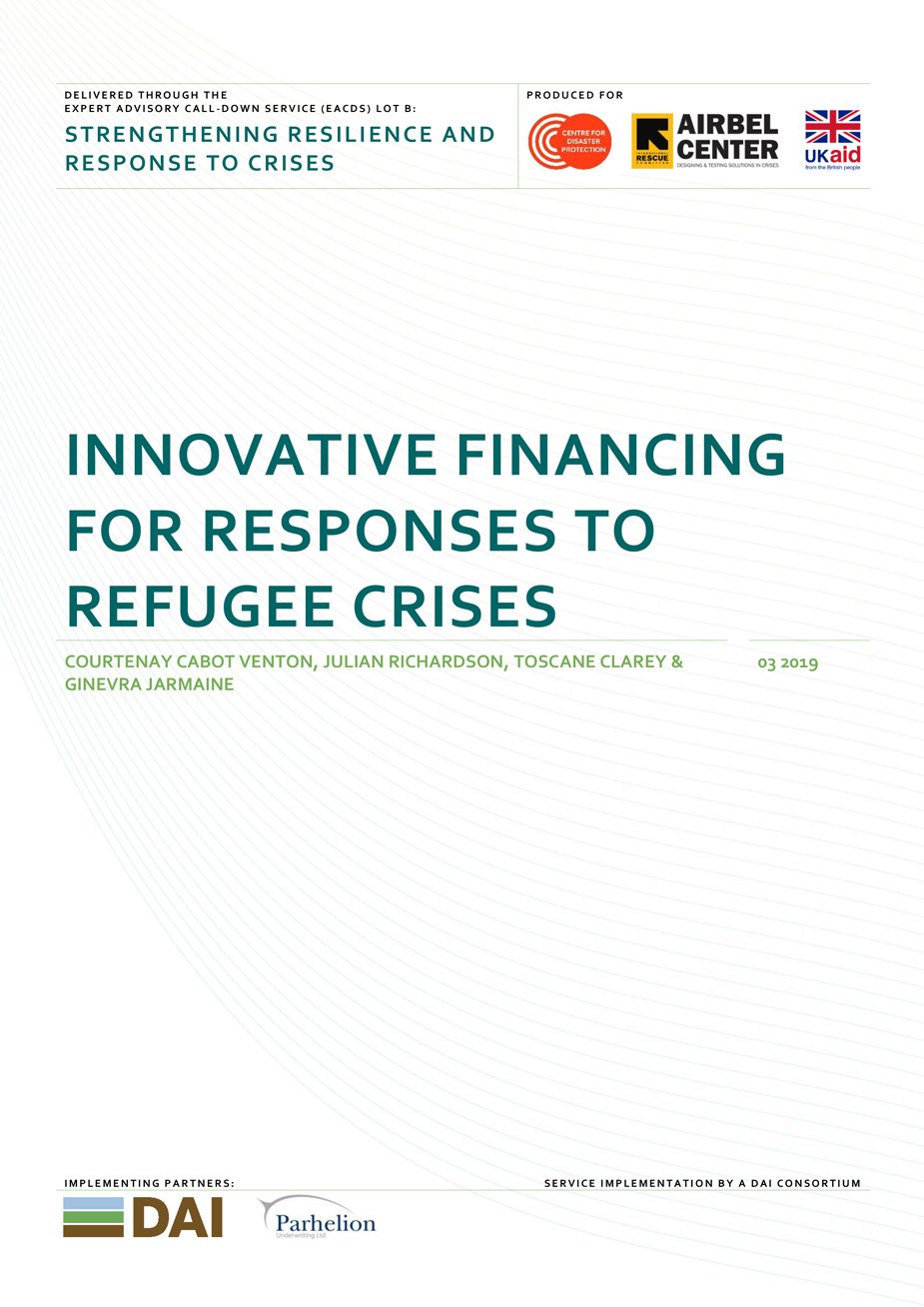CONTRIBUTIONS AND CHALLENGES OF DISASTER RISK FINANCING AS A RESPONSE TO CLIMATE CHANGE INDUCED LOSSES AND DAMAGES
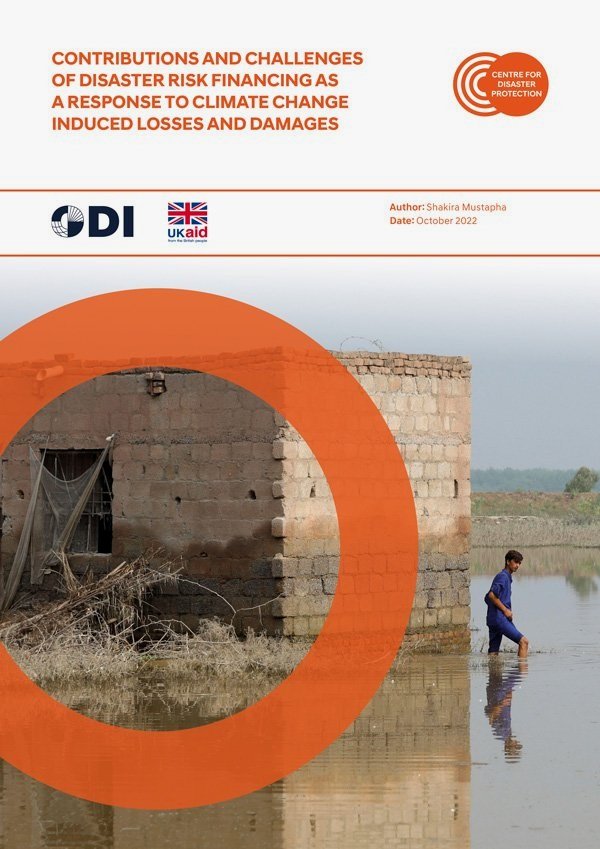
Human-induced climate change will continue to cause losses and damages, with vulnerable developing countries and communities that have contributed least to the climate crisis bearing the brunt of its consequences. Loss and Damage is the third pillar of the international climate regime in the 2015 Paris Agreement, alongside mitigation and adaptation.
In order to play a well-targeted and effective role, it is important to understand the applications and limits of Disaster Risk Finance as a response to climate-induced losses and damages. This paper explores how DRF instruments are being framed and understood within the panorama of Loss and Damage policy and finance agendas, highlighting areas of contention and sensitivity.
RELATED PUBLICATIONS
Climate change is wreaking havoc on human lives, livelihoods and well-being in the world’s most vulnerable countries and communities. After decades of little to no progress, the agenda for loss and damage finance has shifted considerably in the past 12 months, with the announcement and launch of two major initiatives that aim to address aspects of this challenge. One is the Loss and Damage Fund agreed to at COP27, which has emerged from within the UNFCCC; the other is the Global Shield against Climate Risks, a joint G7 and V20 initiative.
This insight paper aims to improve the reader’s understanding of these two initiatives and provide insights into how thy may relate to each other, including possibilities for complementarity, and underlying tensions.
This insight paper provides an overview of the key features of debt pause clauses, also known as climate resilient debt clauses. The paper highlights issues that may affect the incentives of sovereign governments and creditors to adopt them. It builds on confidential advice to the UK-chaired Private Sector Working Group by the Centre for Disaster Protection and has been informed by a private roundtable discussion with key legal, sovereign finance and development experts convened by the Centre in March 2023.
As disaster risk financing (DRF) matures, it needs to better understand and implement accountability—particularly towards the at-risk people it seeks to benefit. There is growing awareness of this, but application remains nascent. This working paper presents a framework for understanding accountability in this context, as well as an overview of implementation in order to stimulate and inform progress.
This guidance note offers practical guidance on contingency planning and triggers for preparing before a disaster strikes to support a faster, more coordinated, and ultimately, more effective response.
There is currently little in the way of rigorous evidence of impact or established ‘best practice’ in DRF. It is important, therefore, that we engage in scrutiny, be open to learning and willing to be held accountable. This guidance note sets out practical ways to ensure quality, independent scrutiny and improved learning in your DRF initiatives.
Ensuring the inclusive participation of people in DRF is essential but challenging. It builds trust and empowers the public to demand greater accountability of governments and reward them for reliable disaster support. This guidance note gives practical advice on consulting and involving communities in decision-making that impacts their lives.
A DRF programme can be sound from a technical angle—but when it fails to consider the broader environment, its impact is diminished. This publication explains the importance of thinking strategically and sets out four principles for taking a strategic approach, with practical advice and resources.
This insight paper examines the challenge of handling basis risk in disaster risk financing systems. It argues how the use of data and management of basis risk has the potential to significantly increase the neutrality and impartiality of humanitarian decision-making, offering a new type of financing and increased accountability.
This paper outlines the current state of anticipatory action and discusses some of the existing evidence on its impact. It is not intended to provide a comprehensive literature review or a meta-analysis of the impacts of early warning or early action initiatives. Rather, it presents some examples of different types of impact associated with a range of anticipatory action in developing countries. This is in recognition of the diversity of anticipatory action mechanisms and variety of activities being implemented in different contexts, as well as the range of studies that have been carried out focusing on different outcomes. The paper also highlights evidence gaps and points out some of the methodological challenges in measuring impact.
The growing scale, duration and impact of refugee crises requires innovative approaches to financing that are more efficient, more effective, more equitable, and more sustainable.This report – produced after two Innovation Labs which convened experts spanning the finance, insurance, humanitarian, development and policy fields – lays out a vision for new systems of financing to ensure funds are available rapidly and reliably to respond to the changing nature of global refugee crises.
The growing scale, duration and impact of refugee crises requires innovative approaches to financing that are more efficient, more effective, more equitable, and more sustainable.This report – produced after two Innovation Labs which convened experts spanning the finance, insurance, humanitarian, development and policy fields – lays out a vision for new systems of financing to ensure funds are available rapidly and reliably to respond to the changing nature of global refugee crises.
$3 billion was allocated to the CRW in IDA18, equivalent to a third of IDA’s total spending on crisis financing. This paper and accompanying policy brief detail how the CRW has been used to date, and identifies a number of concrete ways of improving its performance.

